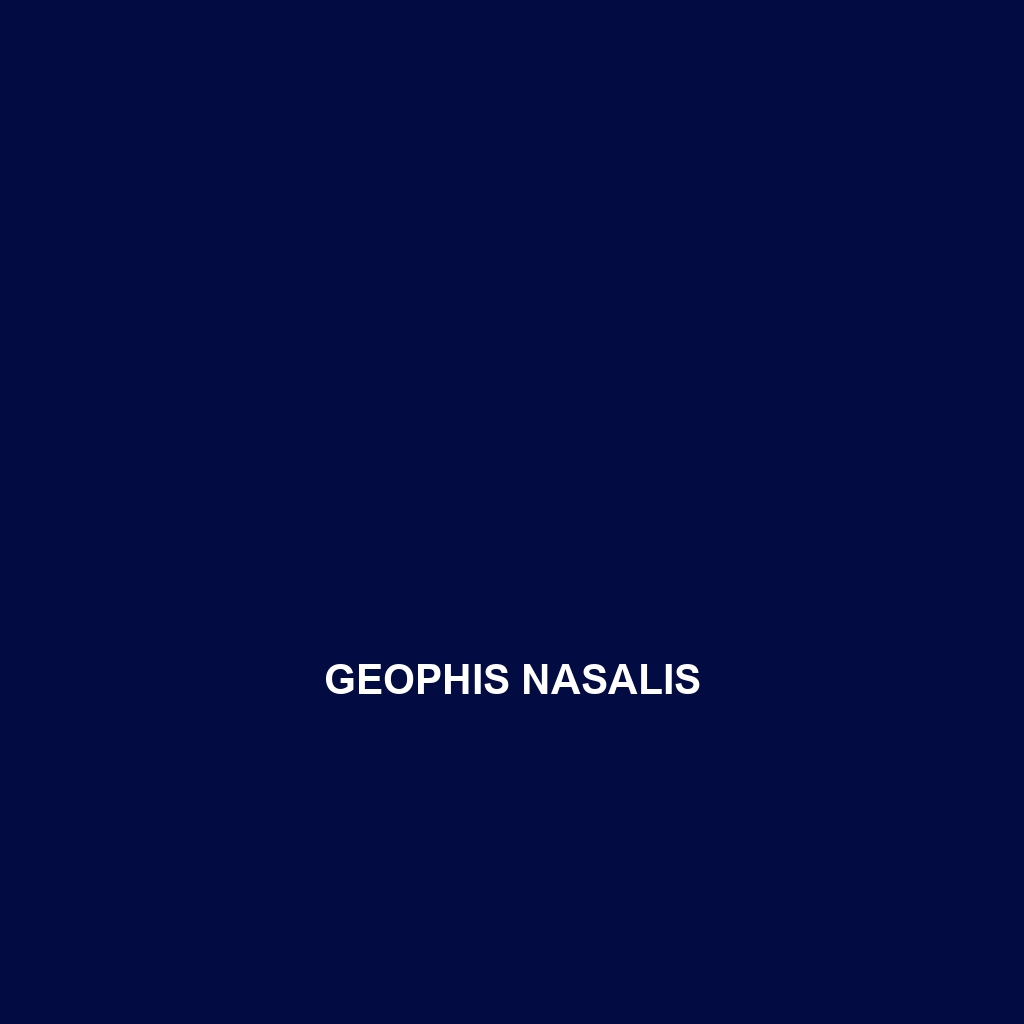Common Name
Geophis nasalis
Scientific Name
Geophis nasalis
Habitat
Geophis nasalis, commonly known as the Nasal Earth Snake, is primarily found in the lush rainforests and temperate forests of Central America, specifically in regions such as Costa Rica, Panama, and parts of southern Mexico. These areas are characterized by high humidity levels and warm temperatures, creating an ideal environment for this species. The Nasal Earth Snake prefers moist, leaf-littered areas and can often be found burrowing in soft soil or under layers of decomposing vegetation. This habitat provides the necessary cover from both predators and extreme weather conditions, making it a perfect niche within the tropical ecosystem.
Physical Characteristics
Geophis nasalis is a relatively small and slender snake, typically measuring between 30 to 60 centimeters in length. Its body is adorned with smooth, shiny scales that are often dark brown or grayish in color, sometimes exhibiting lighter belly coloration. A defining feature of this species is its uniquely elongated snout, which is adapted for burrowing and foraging through soft soil. The snout is often paler than the rest of the body, providing camouflage among the forest floor’s natural hues. Its slight, streamlined shape aids in navigating through the dense leaf litter, a necessity for both hunting prey and avoiding detection by predators.
Behavior
Geophis nasalis exhibits primarily nocturnal behavior, emerging primarily during the cooler nighttime hours to hunt and explore its territory. During the day, it seeks refuge under rocks, logs, or within the soft soil, minimizing its exposure to sunlight and potential threats. Mating rituals are observed during the rainy seasons, when males engage in courtship displays, including body weaving and scent marking to attract females. This species is relatively solitary, coming together only for reproduction, emphasizing its independent lifestyle and strategic territoriality.
Diet
As an insectivore, Geophis nasalis primarily preys on small insects, earthworms, and other soft-bodied invertebrates found within its tropical habitat. Its hunting strategy involves burrowing into the soil or leaf litter, using its keen sense of smell, and detecting vibrations to locate unsuspecting prey. The snake’s slender body allows it to maneuver effortlessly through the ground, capturing and consuming its prey rapidly. This dietary specialization plays a critical role in controlling insect populations and maintaining the ecological balance of its rainforest environment.
Reproduction
Geophis nasalis engages in a seasonal mating cycle that aligns with the warmer months of the year, typically during the rainy season. After a gestation period of about 60 days, females lay a clutch of 5 to 10 eggs, which they bury in damp, warm soil—a protective action that aids in the eggs’ incubation. Upon hatching, the juvenile snakes are independent and begin their life cycle immediately, displaying similar behaviors and dietary habits to adults. Parental care is absent, but the strategic placement of eggs in a secure environment helps ensure the survival of the offspring against predators.
Conservation Status
Currently, Geophis nasalis is classified as Least Concern by the International Union for Conservation of Nature (IUCN). However, habitat destruction due to deforestation and agricultural expansion poses significant threats to its population. Conservation efforts are underway in several regions, focusing on habitat preservation and education to mitigate human impact. Continued monitoring and research are essential to ensure that this species can adapt and thrive amidst environmental challenges.
Interesting Facts
One of the most fascinating aspects of Geophis nasalis is its remarkable ability to sense vibrations in the soil, which aids in both hunting and avoiding predators. This snake has developed a unique adaptation in its elongated snout, which not only assists in burrowing but also enhances its sensory perception of its environment. Additionally, its elusive nature makes it a less-studied species, leaving many of its habits and ecological roles still to be discovered by researchers.
Role in Ecosystem
Geophis nasalis plays a crucial role as both a predator and prey in its ecosystem. By feeding on a variety of invertebrates, it helps regulate their populations, contributing to soil health and nutrient cycling. Additionally, as a prey species, it serves as a food source for larger reptiles and mammals, thus maintaining the balance within the local food web. Its presence is indicative of a healthy rainforest ecosystem, highlighting the importance of preserving biodiversity.
